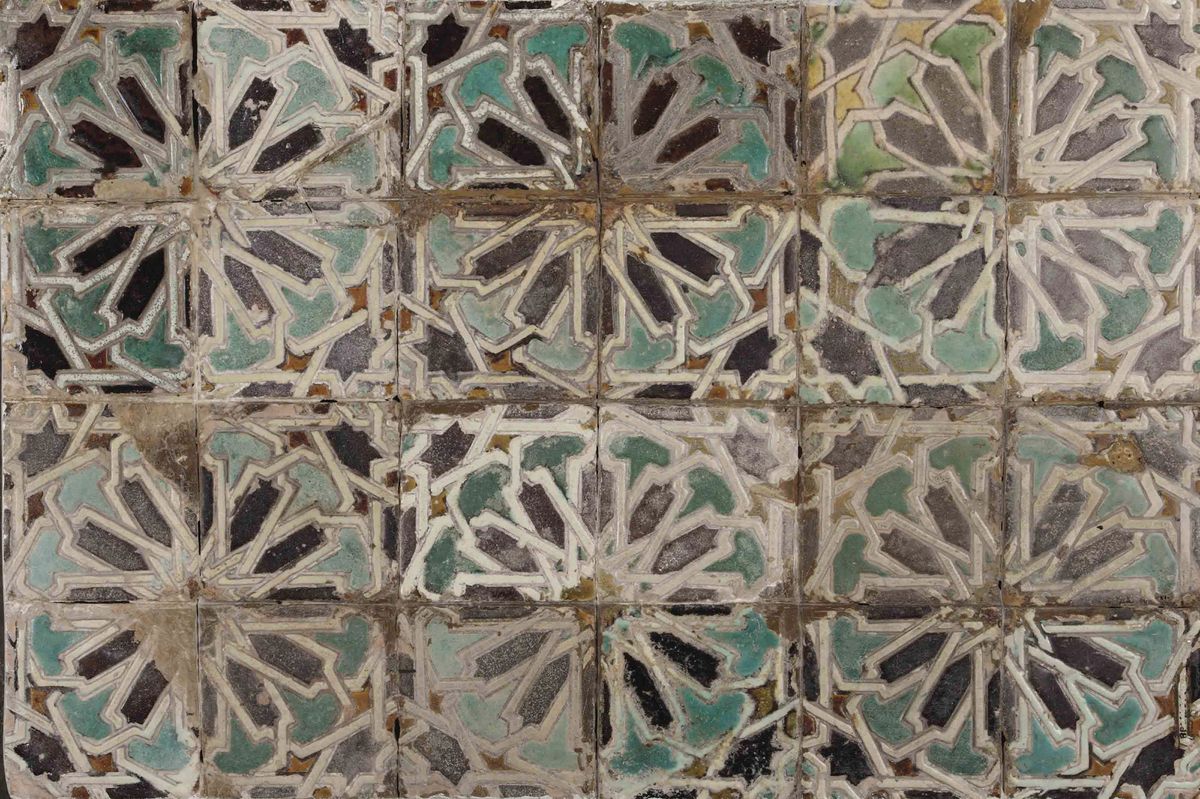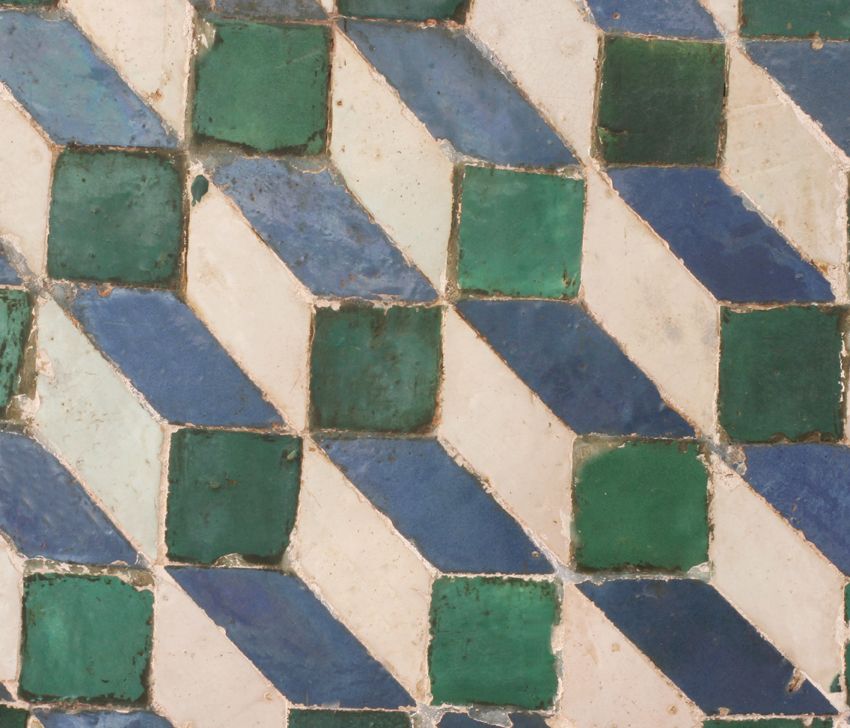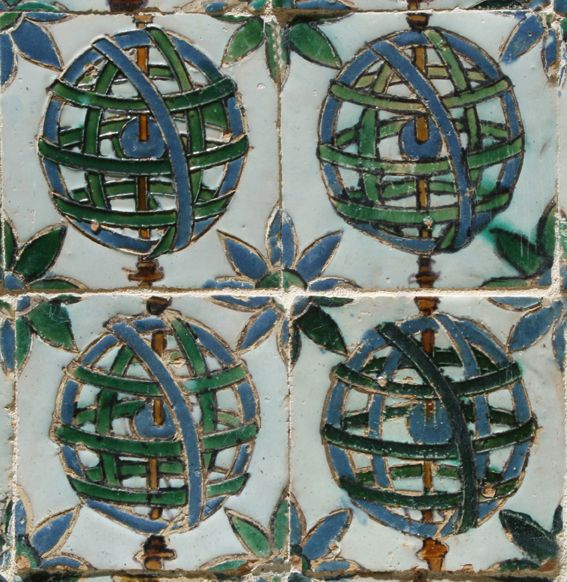
With the conquest of the Kingdom of Granada by the Catholic Monarchs in 1492, the Muslim elite that had for centuries promoted the art of alicatado tilework in the Iberian Peninsula disappeared. This technique, which was very costly, had been used primarily by kings and nobles, in both Islamic and Christian kingdoms.
Transition of Techniques
Alicatado required close collaboration between the ceramicist and the alarife, who was responsible for cutting and fitting each piece with precision. Because it was time-consuming and expensive, the technique was gradually replaced by quicker and more economical solutions that could meet growing demand.
The answer came in the form of the square tile, easier to manufacture and apply. One of the styles that emerged from this need was the dry-cord tile.


The Square Dry-Cord Tile
The Hispano-Moresque dry-cord tile appeared as an alternative to alicatado. Inspired by Islamic patterns, this type of tile was decorated with outlines traced using a greasy paste mixed with manganese oxide. This “dry cord” acted as a barrier between the colors, preventing the glazes from blending during firing.
A Milestone in Decorative Ceramics
This method made it possible to produce tiles with complex designs—similar to those of alicatado—but more quickly and affordably. Thus, the dry-cord technique marked an important transition in Iberian decorative ceramics, preserving Islamic influence within an increasingly Christian context.
